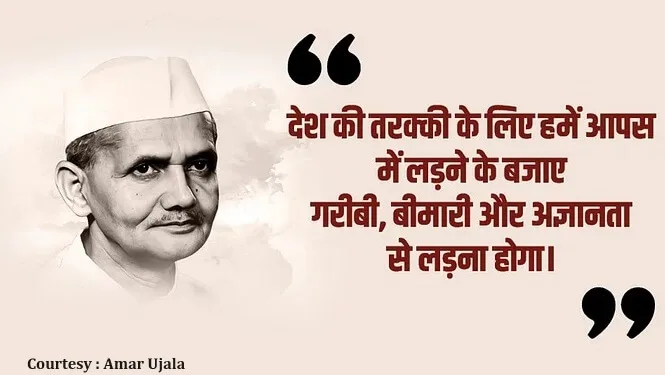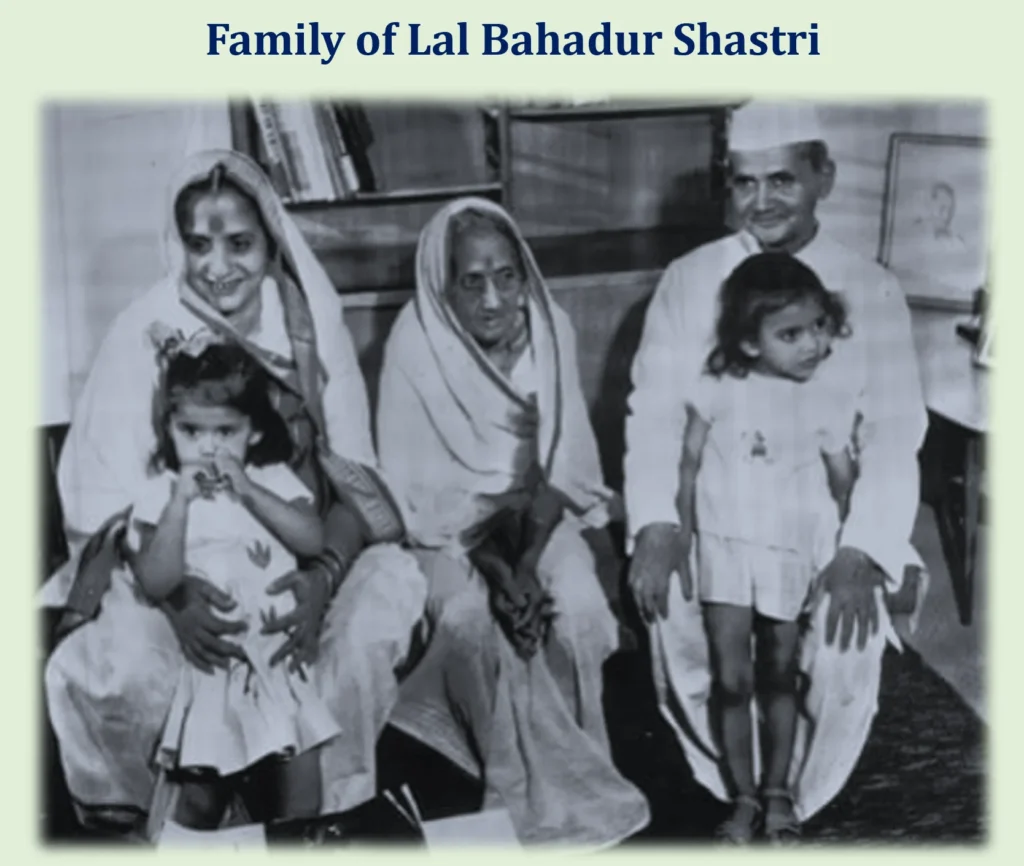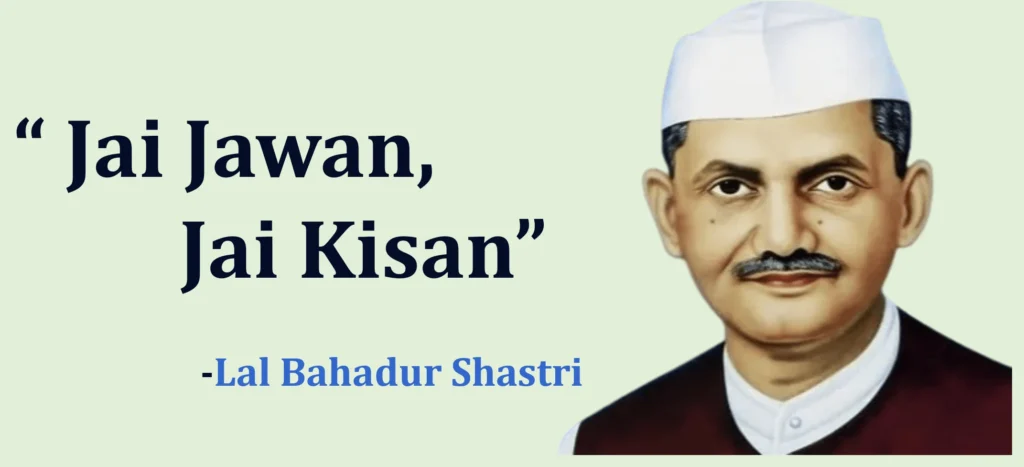
Lal Bahadur Shastri shares his birthday with the greatest personality of all time, Mahatma Gandhi. He was as simple as Gandhiji. He became the synonym simplicity and honesty in India. And this what made him the son of soil and he was loved by each individual. We are unfortunate that he got to serve India as a Prime Minister for a very short duration. Nevertheless, his short tenure was full of landmark decision. All of those decisions forced the nation to evolve. We will discover more about Lal Bahadur Shastri’s life and the admirable things he accomplished for India in this blog article. He was a role model for us on how to govern effectively and was instrumental in shaping modern-day India.
Early Life of Lal Bahadur Shastri
It was on 2nd October,1904 when a Ramdulari Devi gave birth to a child in a small town named as Mughalsarai. Sharada Prasad Srivastava, husband of Ramdulari Devi named their child as Lal Bahadur Shastri. Having born in a poor family of farmers, his father earned his living by working as a schoolteacher and his mother was a homemaker. Ever since his young age Lal Bahadur Shastri was attracted by the books. He had a deep interest in learning. This was the quality that was going to shape the future of this child.

Despite facing financial challenges, Shastri’s family recognized his potential and encouraged his education. As soon as he completed his primary education at his birthplace Mughalsarai, he shifted to Varanasi for further education. The life of the family members became miserable just after the death of his father. It was a great setback for him. But despite this setback, he persisted in going to school. He pursued his education at Varanasi’s Harish Chandra High School despite having financial issues and a strong desire to succeed.
Shastri finally arrived at Kashi Vidyapeeth, where he studied philosophy and ethics, as a result of his educational trip. He was greatly impacted by Mahatma Gandhi’s ideas at this time since he was spearheading the nonviolent movement for India’s freedom.
The Freedom Struggle and Political Beginnings
Lal Bahadur Shastri’s dedication to the liberation movement had a direct impact on his entry into politics. Shastri actively engaged in a number of rallies and activities against British colonial authority. The call for non-cooperation and civil disobedience made by Mahatma Gandhi encouraged him to take part in these actions. He was thus detained several times.
It was his active participation in Salt Satyagraha,1930 that changed the entire course of his political career. This mass protest against the British monopoly on salt production and distribution saw Shastri being imprisoned for nearly two years. His unwavering commitment to the cause earned him the respect and admiration of fellow freedom fighters.
Political Career Post-Independence
After India gained independence, Shastri got a job as Parliamentary Secretary in his home state, Uttar Pradesh. Later, on August 15, 1947, he became the Minister of Police and Transport under Chief Minister Govind Ballabh Pant. This happened because Rafi Ahmed Kidwai, who had the job before, went to work as a minister in the central government.
When Shastri was the transport minister, he did something groundbreaking. It was during his tenure that the female conductors were appointed for the job that was usually carried out by the men. When he was in command of the Police Department, he also took a wise course of action. Instead of using sticks to control big, unruly crowds, he told the police to use water jets. This made it easier to handle difficult situations.
While he was the police minister (which was called Home Minister before 1950), he did a great job. In 1947, when India was going through a really hard time with a lot of fighting between different groups, Shastri stepped in to help. He worked to stop the fights and bring peace. He also worked really hard to help people who had to leave their homes find new places to live.
Leading During Challenging Times
Lal Bahadur Shastri was chosen by the Congress party to succeed Jawaharlal Nehru as prime minister in 1964. Because the nation was experiencing issues both inside and outside of its boundaries, leading India during that time was exceedingly difficult. But Shastri had to lead India through all of it. However, Shastri had to take charge and lead India through everything.
Indo-Pak War (1965)
When India and Pakistan fought a major war in 1965, Shastri played a crucial role as prime minister. In Kashmir, Pakistan was provoking problems, which escalated into a large brawl. Shastri, who is renowned for being composed and resilient, demonstrated superb leadership during this trying period. He successfully commanded the military forces, brought the nation together, and sought assistance from other nations. He finally ensured peace by ratifying the Tashkent Agreement in 1966. People admired his concern for India’s security and desire for peace greatly. People admired his concern for India’s security and desire for peace greatly.

The Green Revolution
When Shastri was in charge, he did a lot to help farming. He realized that India needed more food, so he started something called the Green Revolution. This was about making farming better and getting more food. It helped India grow enough food for itself and changed how farming worked.
Economic Changes
Shastri really believed in India being strong on its own. He wanted Indian businesses to grow and not depend too much on other countries. So, he made rules to help Indian industries and reduce the need for foreign help. This was important for India’s future growth.
The White Revolution
After the Green Revolution, Shastri started something called the White Revolution. This was about making more milk. It helped the dairy industry grow quickly, and he even created the National Dairy Development Board (NDDB) to make it happen.
Simple and Honest Ways of Lal Bahadur Shastri
Lal Bahadur Shastri was known for being simple and honest. He showed other politicians how to live without being fancy and not using their position for their own benefit. His famous saying “Jai Jawan, Jai Kisan” (Hail the Soldier, Hail the Farmer) showed that he cared about both the armed forces and the farmers.
Legacy of Lal Bahadur Shastri
Lal Bahadur Shastri was on a visit to Tashkent, Uzbekistan where he signed the Tashkent agreement on January 11,1966. The same night Shastri’s life unexpectedly came to an end. This news deeply saddened the entire nation because Shastri was a leader who had always prioritized India’s welfare above everything else.
However, Shastri’s influence on India didn’t fade away with his passing. His actions and ideas continue to make India stronger. He showed exceptional leadership during tough times, cared deeply about regular people, and stressed the importance of India depending on itself.
In conclusion, Lal Bahadur Shastri remains a symbol of humility, honesty, and leadership in Indian history. His life and achievements remind us that great leaders don’t need to be loud. His legacy is like a guiding light for leaders and citizens, teaching us the values that make a nation great.
